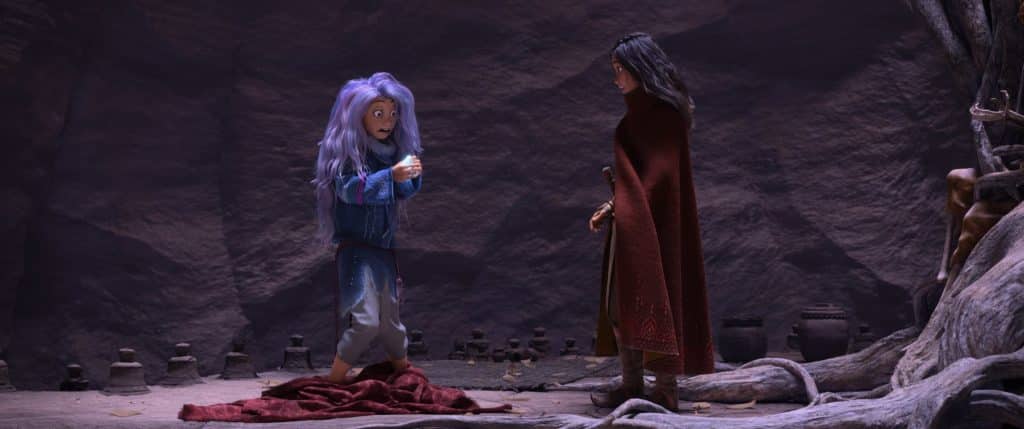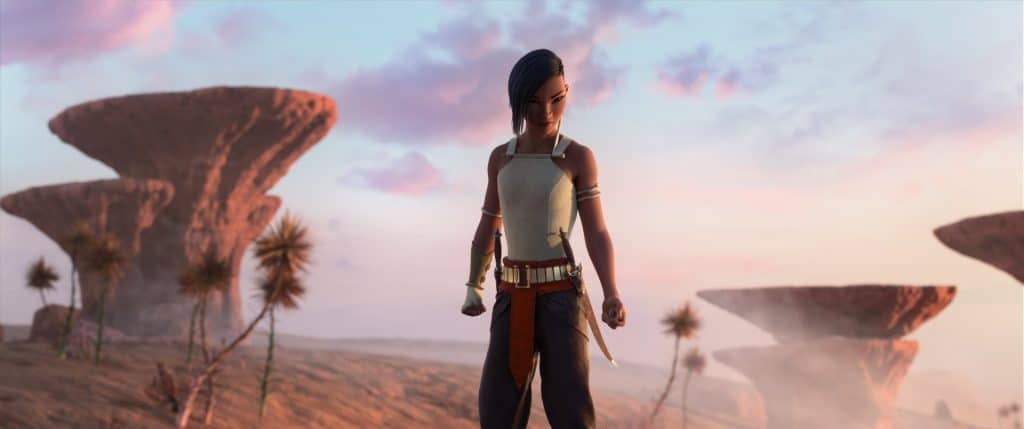Read also:
How to Watch FX Live Without CableHow To Watch AMC Without CableHow to Watch ABC Without CableHow to Watch Paramount Network Without CableDisney’s high-fantasy adventure is spirited and dynamic, even as it flattens a host of Southeast Asian cultural signifiers into a homogenous whole.
(Note: We heavily encourage you to read reviews and criticism from Southeast Asian critics, who have a much more intimate and detailed understanding of the cultures from which Raya and the Last Dragon draws inspiration. This thread is a helpful primer.)
Raya and the Last Dragon is the latest effort by Disney (after works like Moana and Coco) to diversify its previously lily-white roster of princesses and erstwhile heroes, and for what it’s worth it’s one of its better examples. As a rollicking adventure story, it’s visually vibrant and well-choreographed, with some of the best action a Disney animated film’s ever seen. It’s anchored by a timeless-if-monotone story about trust and cooperation that underpins its character’s primary journey. And it offers Southeast Asian audiences a chance to see themselves on the screen — though without the specificity they may prefer.
Rather than set Raya in a real Southeast Asian country, Vietnamese-American screenwriter Qui Bguyen and Malaysian-born Adele Lim create a fictionalized world called Kumandra that borrows from traditions, cultures, and aesthetics of a host of SEA countries (Laos, Myanmar, Indonesia, Thailand, etc.). The story goes thusly: humans and dragons used to live together in harmony, before horrid monsters called the Druun (roly-poly purple balls of smoke that can turn you to stone) ravaged the land, forcing the dragons to sacrifice themselves to save humankind.

500 years later, the people of Kumandra are split into five factions, each with their own specific culture: Fang, Talon, Spine, Heart, and Tail. All of them distrust the others, but they all resent Heart the most — which hosts the gem of a powerful dragon named Sisu, who drove back the Druun so long ago.
One fateful day, Heart princess Raya (voiced by Vietnamese-American Kelly Marie Tran) is betrayed by Fang princess Namaari (Gemma Chan), which wings up destroying said Dragon Gem and unleashing the Druun upon humankind — and breaking Raya’s trust in people. Six years later, she hunts for the shattered pieces of the Dragon Gem to try to restore it, finding the real Sisu (Awkwafina) in the process and being drawn into a larger adventure that will span all five lands.
For what it’s worth, the nuts and bolts of the story work like gangbusters. Raya is a winsome protagonist, capable and headstrong without feeling invincible, Tran imbuing her with some realistic flaws and vulnerabilities that complicate her fighting prowess. She’s surrounded by charming, if not fully-fleshed out characters, a team that includes Benedict Wong as a hulking Spine warrior and young Izaac Wang as a laconic congee chef/boat captain.
But it’s the realistic rivalry/fractured friendship between Raya and Namaari that works as the film’s best dynamic. They’re two warrior women who want to do what’s best for their people, even if that puts them at loggerheads; their aggression and distrust are at least partially informed by their initial rift as teenagers.
Admittedly, it’s Awkwafina’s Sisu that suffers the most from the film’s uneven tone. She’s too much like a cringeworthy Disney sidekick at times that it cuts into the otherwise-effective moments where she urges unity and peace to the vengeance-hungry Raya. The same goes for a lot of Raya‘s other characters, from a con-baby right out of a Dreamworks picture to the pill bug/armadillo-like steed Tuk Tuk (voiced by Disney’s favorite go-to for animal sidekicks, Alan Tudyk). These gags may draw in the younger kids, but sometimes they feel shoehorned in from a different picture.
Quibbles with authenticity aside… there’s a lot to like about Raya and the Last Dragon.
Raya and the Last Dragon looks fantastic, though, directors Don Hall and Blindspotting‘s Carlos López Estrada leaning into the rich textures and reliable hero’s-journey structure of Raya’s story, while also keeping the script firmly ensconced in its more humanistic themes. There are shades of Tomb Raider, Nausicaa, and a heaping helping of Avatar: The Last Airbender (right down to its nonspecific, pan-Asian fantasy world) to help things along.
The fight scenes are fantastically choreographed, Raya’s Muay Thai and silat-inspired movements and asymmetrical kris sword that also separates to double as a whip and grappling hook (see: Gypsy Danger’s sword in Pacific Rim) offering plenty of inventive opportunities for combat. And the designs of every prop, floating market, and elegantly-designed weapon offer up plenty of eye candy against the sumptuous, richly-textured environments.
Yet for all its showcasing of SEA cultures in a way that most Western movies don’t even dream of attempting, it’s easy to see criticisms from SEA writers and audiences (see note above) that the film’s combining and mythologizing of a host of nations flattens the film’s sense of cultural specificity. Kumandra is a mishmash of every major Southeast Asian country, where jackfruit exists alongside congee, Vietnamese conical hats next to Indonesian architecture.

It’s nice to see so many cultures given such a broader audience through an accessible Disney epic — maybe it’ll encourage people to look into these cultures and learn more about them! But it also gives the impression of an entire area feeling homogenized for Western consumption. One hopes this movie is just the beginning of greater SEA representation, and not Disney checking an entire area of the world off the list and moving on. (Or worse, white audiences conflating these nations altogether.)
These quibbles with authenticity aside, and a few other minor complaints about the oft-shaky tone and thinner characters in the periphery, there’s a lot to like about Raya and the Last Dragon. For audiences who like their Disney princesses more self-possessed, but filled with relatable flaws, Raya makes for a compelling protagonist. Its message of unity and trust may sting a little in 2021 America — who wants to hear “reach across the aisle” right now? But they also appeal to our better angels, the notion that even if an enemy might swat away a hand extended in friendship… they might not, and it’s worth taking that chance.
In a year when we’ve all been ripped apart and isolated by our own apocalyptic forces, Raya’s quest to bring communities back together hits unexpectedly hard as well. For those of us whose parents are still around, it’s not hard to relate to Raya’s deep yearning to see her father (Daniel Dae Kim) again, and the desperate resolve she has towards making that dream possible. And the many betrayals of the last four years make it easy for us, like Raya, to be wary of our neighbors. When Raya and the Last Dragon tells us to hope and trust, it may be naive. But it’s better to be naive than to give up. And those messages, however unsubtly conveyed, make it a welcome watch right now.
Raya and the Last Dragon comes to theaters and Disney+’s Premier Access option (meaning you have to pay extra to see it) on March 5th.